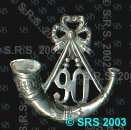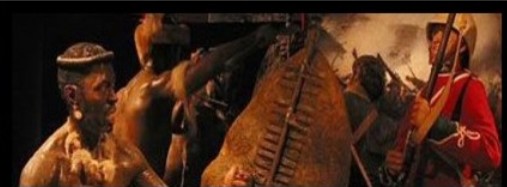| Latest topics | » The Pictorial World - March 15th 1879 Yesterday at 1:13 pm by ben2000 » The lost diary of Pvt James Owen Thu Jul 25, 2024 12:03 pm by miklew » Last of the 24th at Isandhlwana Wed Jul 24, 2024 6:16 pm by John Young » What was the uniform of field marshals/generals in the zulu war? Mon Jul 22, 2024 6:53 am by John Young » Henderson and the NNH at Rorke's Drift  Sat Jul 20, 2024 12:17 pm by SRB1965 » Capt. D. Hayes 1/3rd Regt., NNC Thu Jul 18, 2024 11:11 am by Julian Whybra » The Wrecked Camp Wed Jul 17, 2024 4:33 pm by Julian Whybra » Private N/N John Robert Branch 90th Regiment and his discovered diary Mon Jul 15, 2024 8:53 pm by 1879graves » Private John Scott 24th Regiment a fugitive at large Sun Jul 14, 2024 12:06 pm by 1879graves » 90th foot sgt T. Collins 214 Sun Jul 14, 2024 10:57 am by johnman » Baron Von Steitencron Wed Jul 10, 2024 3:10 pm by Julian Whybra » Sgt Joseph Windridge, Defender of Rorke's Drift - Memorial Tue Jul 09, 2024 3:15 am by 90th » Writing advice Sun Jul 07, 2024 4:04 pm by Julian Whybra » South Africa 1877-79, 1 clasp, 1877-8-9 (4389 Fr. Sergt. S. Smith. O/2. Bde. R.A.) Sun Jul 07, 2024 9:30 am by rai » The trashing of the Zulu monument to the brave warriors at Isandlawana March 12, 2024 has been blamed on scrap metal scavengers. Thu Jul 04, 2024 7:41 pm by ADMIN» The Goodwill Zulu Festival: Celebrating the Welsh and KwaZulu Natal Shared Heritage. Thu Jul 04, 2024 7:27 pm by ADMIN» Any nominal role of G Coy 2/24th regiment  Thu Jul 04, 2024 11:18 am by Wayne » Bassage Diary Thu Jul 04, 2024 9:31 am by Julian Whybra » Prior to Sihayo's Kraal  Thu Jul 04, 2024 9:19 am by 90th » British Fort Locations Thu Jul 04, 2024 3:40 am by 90th » Sergeant 1064 Tom Hick / Hicks G Company 2/24th Regiment Wed Jul 03, 2024 11:05 am by Julian Whybra » A Hungarian soldier in the Zulu War (?) Fri Jun 28, 2024 2:31 pm by Mr M. Cooper » Private 25B/279 Henry Sears Bugler E Company 24th Reg. KIA Isandlwana Thu Jun 27, 2024 1:07 pm by gardner1879 » Hamilton Browne's birthday Fri Jun 21, 2024 9:22 am by Julian Whybra » Zulu "Corps" Thu Jun 20, 2024 6:01 pm by Hobbes » Army Pay Department Personnel Thu Jun 20, 2024 11:49 am by Julian Whybra » Ntshingwayo birth date Sun Jun 16, 2024 11:37 am by Hobbes » Zibhebhu and Cetshwayo's family Wed Jun 05, 2024 9:11 pm by Julian Whybra » Smith's Store/Hotel Wed Jun 05, 2024 6:06 pm by Julian Whybra » Corporal James Frowen Williams F Company.  Tue Jun 04, 2024 5:20 pm by Julian Whybra » Shaka iLembe Sat Jun 01, 2024 1:27 pm by Jon84 » Bugler 1415 Thomas Finn / Flin 90th Regiment  Sat May 25, 2024 11:28 am by johnman » Inspector-General Evelyn Richard Hugh Pollard Tue May 14, 2024 10:13 am by ADMIN» Alfred Fairlie Henderson photographs. Sat May 11, 2024 8:01 am by Julian Whybra » Fairlie's Native Police Thu May 02, 2024 9:12 pm by Hobbes |
| July 2024 | | Mon | Tue | Wed | Thu | Fri | Sat | Sun |
|---|
| 1 | 2 | 3 | 4 | 5 | 6 | 7 | | 8 | 9 | 10 | 11 | 12 | 13 | 14 | | 15 | 16 | 17 | 18 | 19 | 20 | 21 | | 22 | 23 | 24 | 25 | 26 | 27 | 28 | | 29 | 30 | 31 | | | | |  Calendar Calendar |
|
| Top posting users this month | |
| New topics | » The Pictorial World - March 15th 1879 Yesterday at 1:13 pm by ben2000 » The lost diary of Pvt James Owen Thu Jul 25, 2024 12:03 pm by miklew » Last of the 24th at Isandhlwana Wed Jul 24, 2024 5:53 pm by miklew » What was the uniform of field marshals/generals in the zulu war? Sun Jul 21, 2024 12:30 pm by darthvaix » Henderson and the NNH at Rorke's Drift  Fri Jul 19, 2024 1:29 pm by SRB1965 » Capt. D. Hayes 1/3rd Regt., NNC Wed Jul 17, 2024 10:52 pm by Julian Whybra » The Wrecked Camp Sun Jul 14, 2024 8:51 am by 61MECH » The trashing of the Zulu monument to the brave warriors at Isandlawana March 12, 2024 has been blamed on scrap metal scavengers. Thu Jul 04, 2024 7:41 pm by ADMIN» The Goodwill Zulu Festival: Celebrating the Welsh and KwaZulu Natal Shared Heritage. Thu Jul 04, 2024 7:27 pm by ADMIN |
| Zero tolerance to harassment and bullying. | |
Due to recent events on this forum, we have now imposed a zero tolerance to harassment and bullying. All reports will be treated seriously, and will lead to a permanent ban of both membership and IP address.
Any member blatantly corresponding in a deliberate and provoking manner will be removed from the forum as quickly as possible after the event.
If any members are being harassed behind the scenes PM facility by any member/s here at 1879zuluwar.com please do not hesitate to forward the offending text.
We are all here to communicate and enjoy the various discussions and information on the Anglo Zulu War of 1879. Opinions will vary, you will agree and disagree with one another, we will have debates, and so it goes.
There is no excuse for harassment or bullying of anyone by another person on this site.
The above applies to the main frame areas of the forum.
The ring which is the last section on the forum, is available to those members who wish to partake in slagging matches. That section cannot be viewed by guests and only viewed by members that wish to do so. |
| Fair Use Notice | | Fair use notice.
This website may contain copyrighted material the use of which has not been specifically authorised by the copyright owner.
We are making such material and images are available in our efforts to advance the understanding of the “Anglo Zulu War of 1879. For educational & recreational purposes.
We believe this constitutes a 'fair use' of any such copyrighted material, as provided for in UK copyright law. The information is purely for educational and research purposes only. No profit is made from any part of this website.
If you hold the copyright on any material on the site, or material refers to you, and you would like it to be removed, please let us know and we will work with you to reach a resolution. |
| | | Making a British Army Bayonet at RSAF Enfield 1884 |  |
| | | Author | Message |
|---|
rusteze

Posts : 2871
Join date : 2010-06-02
 |  Subject: Making a British Army Bayonet at RSAF Enfield 1884 Subject: Making a British Army Bayonet at RSAF Enfield 1884  Wed Jan 14, 2015 8:55 pm Wed Jan 14, 2015 8:55 pm | |
| |
|   | | free1954
Posts : 182
Join date : 2012-02-16
Location : northeast usa
 |  Subject: Re: Making a British Army Bayonet at RSAF Enfield 1884 Subject: Re: Making a British Army Bayonet at RSAF Enfield 1884  Thu Jan 15, 2015 9:30 am Thu Jan 15, 2015 9:30 am | |
| very interesting. thanks for the post
|
|   | | Neil Aspinshaw

Posts : 553
Join date : 2009-10-14
Location : Loughborough
 |  Subject: Re: Making a British Army Bayonet at RSAF Enfield 1884 Subject: Re: Making a British Army Bayonet at RSAF Enfield 1884  Fri Jan 16, 2015 8:29 am Fri Jan 16, 2015 8:29 am | |
| Rusteze good post, There was reasons for the "bend test" after reported issues with the bayonets on the Sudan campaign as the original test only tested the bayonet on its from face. Some lost temper, and became distorted.
The last image of the bend test is the earlier test, the new 1884 test involved initially bending the bayonet on all three faces on a block 21/2” high, next the bayonet was twisted from point to socket through ninety degrees, and, finally the face was struck sharply across an oak block. In early 1885, the Secretary of state ordered that all bayonets in store and in the hands of the troops were to be re-tested by a staff of viewers. The resultant test proved interesting food for thought, with the new test, of those bayonets in store, 3 per cent broke, and 11 per cent were found not to be tempered enough to return to shape, these were classified as “soft”. Those in the hands of troops, and being used regularly in drill and battle, 5% broke, nearly 3% were soft and nearly 5% were actually under gauge or too small at the point.
Most common long socket bayonets were returned to Enfield for re-testing, and subsequently marked were an "R" on the view mark. From July 1882, all bayonets were dated at manufacture to ensure correct auditing of age could be carried out. |
|   | | rusteze

Posts : 2871
Join date : 2010-06-02
 |  Subject: Re: Making a British Army Bayonet at RSAF Enfield 1884 Subject: Re: Making a British Army Bayonet at RSAF Enfield 1884  Fri Jan 16, 2015 8:33 pm Fri Jan 16, 2015 8:33 pm | |
| Here are a couple more extracts from the article about the bayonets. There had obviously been changes at the Royal Small Arms Factory that the author did not approve of. He talks here about the cost cutting and the poorer quality steel that was being brought in to make barrels and bayonets. Prices are interesting. [You must be registered and logged in to see this image.]Steve |
|   | | 90th

Posts : 10890
Join date : 2009-04-07
Age : 68
Location : Melbourne, Australia
 |  Subject: Making a British Bayonet At RSAF 1884 Subject: Making a British Bayonet At RSAF 1884  Fri Jan 16, 2015 11:54 pm Fri Jan 16, 2015 11:54 pm | |
| Good post Steve , interesting reading for sure ! , good to see nothing's changed in over 130 years when it comes to trying to save the almighty penny ! ( as opposed to the $ ! )  90th |
|   | | Neil Aspinshaw

Posts : 553
Join date : 2009-10-14
Location : Loughborough
 |  Subject: Re: Making a British Army Bayonet at RSAF Enfield 1884 Subject: Re: Making a British Army Bayonet at RSAF Enfield 1884  Sun Jan 18, 2015 11:00 pm Sun Jan 18, 2015 11:00 pm | |
| This is a strange article, very interesting, but rather "provocative" for the time and I'll balance it up a bit. Dixon actually left the RSAF to take up a position as MD at the National Arms and Ammunition Company, who held the patent licence for the Martini Action, and was instrumental is the legal case against the Government for the breech of the patent licence by BSA and LSA, and this article smacks somewhat of vindictiveness and I wonder if he was actually interviewed for it.
His successor was Colonel G Frazer who radically altered the way the RSAF worked (Dixon left in 1871 before final approval of the MH) Frazer did a sterling job in ensuring the whole production methods had changed and whilst this article is somewhat critical of him, history does not back this up. Dixon had been at the RSAF during the breech loading/snider age and it took a whole new approach to ensure mass production of the new Martini arm could actually happen, in Nov 1872 production of MH's was only 1200 rifles per week..Frazer took it to a whole new level to 2,224 per week by Jan 1873. however by 1880 the Superintendent was Henry T Arbuthnot, who had joined as Assistant of the RSAF in 1862 and was very well versed in manufacturing techniques (between Frazer and Arbuthnot the superintendent was Frederick Close RA)
No Martini socket bayonets were produced in the RSAF until 1876, thats a fact, so to try and blame Frazer for the selection of steel is not actually correct, it was June 7th 1876 when the common long socket bayonet was adopted and the Inspector then was Frederick Close, as all MH bayonets before that time were converted pattern 1853 17" examples. What the author of this article did not write, is that when the "faulty" bayonets returned from El Teb and Tamaii were inspected, (this is 1884) those bayonets carried by the 1st Battn the Lancs and Yorks, and the 2nd Bttn Royal Irish Fusililers were actually P53 conversions, made well before the change to Sanderson, and history has proven that it was not purely down to "faulty steel", I found the original blue paper on it in Kew, steel was not the issue.
Was there a problem with the Common long socket bayonet, yes, mainly down to tempering, not the quality of the steel, after manufacture, bayonets were tempered by plunging into molten lead and as I wrote earlier, the testing was not rigorous enough to ensure all bayonets were of equal quality after manufacture, as the later test proved.
One thing the author is correct in, it that Firths were charging extortionate amounts for the steel, the steel was Firths Special and was supplied under sole contract, in 1877 after steel supply was tendered, both the Bolton Iron and steel works and Sandersons supplied the steel, Boltons supplied steel manufactured by the Seimens Martin process and Sandersons crucible steel, there were reasons, MH Barrels had previously been rolled, by early 1878 barrels were turned from solid bars known as Barrel Bars, these steel ingots known were made specially to produce barrels by the Bolton works.
A bit like today, the press like to liven things up a bit. |
|   | | rusteze

Posts : 2871
Join date : 2010-06-02
 |  Subject: Re: Making a British Army Bayonet at RSAF Enfield 1884 Subject: Re: Making a British Army Bayonet at RSAF Enfield 1884  Mon Jan 19, 2015 4:20 pm Mon Jan 19, 2015 4:20 pm | |
| Thanks for that clarification Neil. The author of the article is a W. Kynynmound, who I think was Lord Minto, a politician. I have no idea how well qualified he was to comment (but when does that stop a politician!). It appears in the Naval and Military Magazine in 1884. I attach a couple more passages from what is a quite long article which goes into the manufacture of the bayonets. It mentions your point about them being immersed in molten lead to temper them and says they were then quenched in Sperm Whale Oil. The first two extracts are about the use of the new Ryder machine to bring them into shape. It compares the process unfavourably with the earlier hand hammering process. [You must be registered and logged in to see this image.]The final extracts tell about a novel way of testing a sample bayonet from Enfield by taking it to the War Office and driving it into the floor and wall! The author then reveals that the true cause of the failure of bayonets in Egypt was because they were made in "Brummagen" (poor quality Birmingham made?) for the Indian Army! [You must be registered and logged in to see this image.]True or not, it's a fascinating story. Steve |
|   | | Guest
Guest
 |  Subject: Re: Making a British Army Bayonet at RSAF Enfield 1884 Subject: Re: Making a British Army Bayonet at RSAF Enfield 1884  Mon Jan 19, 2015 5:00 pm Mon Jan 19, 2015 5:00 pm | |
| Good post's..think i would insist on a hand made one, preferably held in someone else's hand a few thousand miles away..  |
|   | | | | Making a British Army Bayonet at RSAF Enfield 1884 |  |
|
Similar topics |  |
|
| | Permissions in this forum: | You cannot reply to topics in this forum
| |
| |
| |
